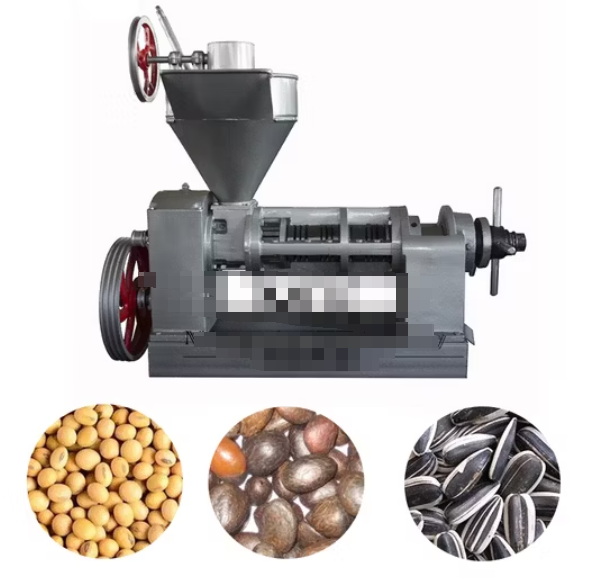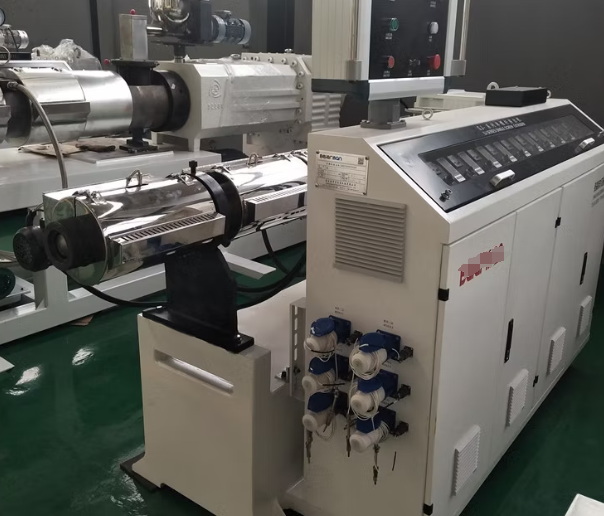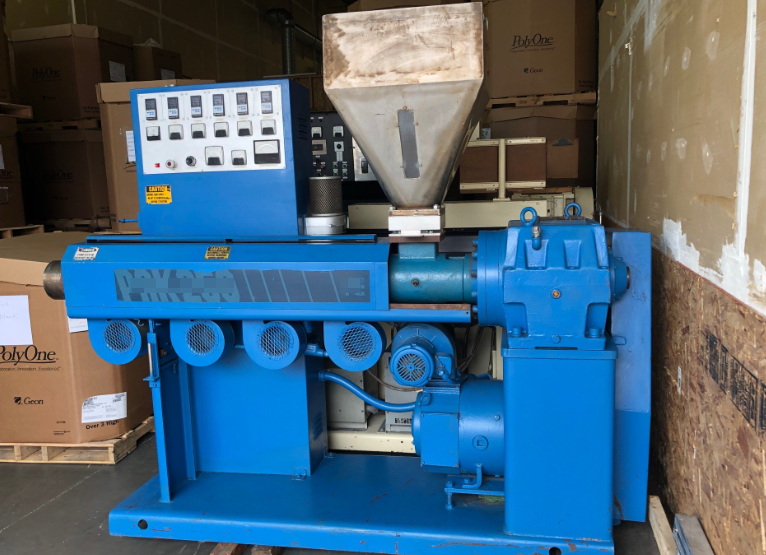Content Menu
● Introduction to Algae Oil Extraction
>> Algae Cultivation
>> Oil Extraction Methods
● Algae Oil Extrusion Equipment
>> Components of Algae Oil Extrusion Equipment
>> Operation of Algae Oil Extrusion Equipment
>> Advantages of Algae Oil Extrusion Equipment
● Challenges and Future Developments
>> Innovations in Algae Oil Extraction
>> Supercritical CO2 Extraction
>> Economic Viability
● Algae Oil in the Energy-Food-Climate Nexus
● Technological Advances and Sustainability
>> Harvesting and Drying Challenges
>> Future Prospects and Commercialization
● Conclusion
● Frequently Asked Questions
>> 1. What is the primary function of algae oil extrusion equipment?
>> 2. How efficient is algae oil extrusion equipment compared to other methods?
>> 3. What are the main components of algae oil extrusion equipment?
>> 4. What are the environmental benefits of using algae oil extrusion equipment?
>> 5. What future developments are expected in algae oil extraction technology?
● Citations:
Algae oil extraction has become a significant focus in the renewable energy sector due to its potential to produce biodiesel and other valuable products. Among various extraction methods, algae oil extrusion equipment plays a crucial role in efficiently extracting oil from algae. This article will delve into the workings of algae oil extrusion equipment, its benefits, and the broader context of algae oil extraction.

Introduction to Algae Oil Extraction
Algae are aquatic organisms that store energy in the form of oils, making them an attractive source for biofuels. The extraction process involves several steps, starting from algae cultivation to oil extraction and refinement. There are multiple methods for extracting oil from algae, including mechanical pressing, solvent extraction, and advanced techniques like ultrasonic and supercritical fluid extraction.
Algae Cultivation
Algae are typically grown in open-pond or closed-pond systems. These systems provide the necessary conditions for algae to thrive, such as sunlight, water, and nutrients. The choice between open and closed systems depends on factors like climate, cost, and the desired level of control over the growing conditions.
Algae cultivation is often enhanced by monitoring raceway conditions using sensors that measure temperature, dissolved oxygen, pH, optical density, algae lipid content, and nutrient and waste levels. Harvesting involves concentrating the algae biomass using natural flocculants and hydrodynamic separation, which can increase the concentration up to 250 g/L wet biomass[1].
Oil Extraction Methods
1. Mechanical Pressing: This method uses an oil press or expeller to squeeze out the oil from algae. It is efficient but may not extract all the oil.
2. Solvent Extraction: Solvents like hexane are used to dissolve the oil from algae. This method is highly efficient but involves chemical use.
3. Ultrasonic Extraction: This method uses ultrasonic waves to disrupt algae cells, releasing their contents. It is efficient and reduces processing time.
4. Supercritical Fluid Extraction: Uses carbon dioxide under high pressure to extract oil. It is highly efficient but requires specialized equipment.
Algae Oil Extrusion Equipment
Algae oil extrusion equipment is designed to efficiently extract oil from algae using mechanical pressure. This equipment typically involves a screw press that applies high pressure and generates heat through friction, helping to release the oil from the algae cells.
Components of Algae Oil Extrusion Equipment
1. Screw Press: The core component that applies pressure to extract oil.
2. Heating System: Helps in denaturing proteins and increasing oil viscosity for easier extraction.
3. Filtering System: Ensures that the extracted oil is free from solids and fibers.
Operation of Algae Oil Extrusion Equipment
1. Preparation: Algae biomass is prepared by drying or partially drying it to enhance oil extraction efficiency.
2. Feeding: The prepared algae biomass is fed into the screw press.
3. Pressing: The screw press applies high pressure, generating heat that helps in oil extraction.
4. Collection: The extracted oil is collected and further processed if necessary.
Advantages of Algae Oil Extrusion Equipment
- Efficiency: Can extract up to 75% of the oil from algae.
- Cost-Effectiveness: Compared to solvent extraction, it involves less chemical use.
- Environmental Benefits: Supports the production of renewable biofuels.

Challenges and Future Developments
Despite its advantages, algae oil extrusion equipment faces challenges such as high initial investment costs and the need for efficient algae cultivation methods. Future developments focus on improving extraction efficiency, reducing costs, and scaling up production.
Innovations in Algae Oil Extraction
1. Ultrasonic and Microwave-Assisted Extraction: These methods enhance extraction efficiency by disrupting algae cells.
2. Twin Screw Extruder: Used for alginate extraction and can be adapted for oil extraction.
3. Subcritical Fluid Extraction: Offers a balance between efficiency and cost.
Supercritical CO2 Extraction
Supercritical CO2 extraction is a promising method for extracting lipids from algae. It uses carbon dioxide under high pressure to efficiently recover lipids without the use of toxic solvents. This method is environmentally friendly and can be used to produce biodiesel and other biofuels[5].
Economic Viability
The economic viability of algae oil production remains a challenge due to fluctuating petroleum prices and high production costs. However, with advancements in technology and strategic investments, algae oil could become a financially viable alternative to fossil fuels[2].
Algae Oil in the Energy-Food-Climate Nexus
Algae oil's versatility extends beyond biofuels. It can be processed into various forms of renewable energy, including biodiesel, bioethanol, bio-oil, biohydrogen, and biomethane. This multifaceted utility positions algae oil as a key player in addressing the interconnected challenges of energy security, food production, and climate change. The ability to grow algae in non-arable land and use waste resources further underscores its potential in creating a sustainable circular economy[2].
Technological Advances and Sustainability
Technological advances in algae oil extraction are crucial for enhancing the economic feasibility of algae oil as a biofuel. Recent innovations include the use of mesoporous solid acid catalysts for the esterification of algae oil, achieving high conversion rates to biodiesel under optimized conditions[2].
Harvesting and Drying Challenges
Harvesting and drying are critical steps in algae oil production. Efficient harvesting methods are needed to reduce costs and environmental impact. Drying is energy-intensive, accounting for up to 30% of total production costs, making it a significant challenge for commercialization[3].
Future Prospects and Commercialization
While the technical feasibility of producing liquid fuels from algae is established, the economic viability remains a hurdle. Continued research and development, along with strategic investments, are essential to overcome the current barriers and realize the full potential of algae oil as a sustainable energy source[2].
Conclusion
Algae oil extrusion equipment plays a vital role in the efficient extraction of oil from algae, supporting the production of renewable biofuels. While it offers several advantages, ongoing research aims to improve its efficiency and reduce costs. As technology advances, the potential for algae-based biofuels to contribute significantly to global energy needs becomes increasingly promising.

Frequently Asked Questions
1. What is the primary function of algae oil extrusion equipment?
Algae oil extrusion equipment is primarily used to extract oil from algae using mechanical pressure. It applies high pressure and generates heat to release oil from algae cells efficiently.
2. How efficient is algae oil extrusion equipment compared to other methods?
Algae oil extrusion equipment can extract up to 75% of the oil from algae, which is less than solvent extraction methods but more environmentally friendly and cost-effective.
3. What are the main components of algae oil extrusion equipment?
The main components include a screw press, heating system, and filtering system. The screw press applies pressure, the heating system aids in oil release, and the filtering system ensures oil purity.
4. What are the environmental benefits of using algae oil extrusion equipment?
Using algae oil extrusion equipment supports the production of renewable biofuels, which can reduce dependence on fossil fuels and contribute to lowering greenhouse gas emissions.
5. What future developments are expected in algae oil extraction technology?
Future developments include improving extraction efficiency, reducing costs, and scaling up production. Innovations like ultrasonic and microwave-assisted extraction are being explored to enhance efficiency.
Citations:
[1] https://patents.google.com/patent/US20150252285A1/en
[2] https://consensus.app/questions/algae-oil/
[3] https://www.frontiersin.org/journals/microbiology/articles/10.3389/fmicb.2016.01019/full
[4] https://strathprints.strath.ac.uk/69989/1/Madugu_Collu_IJEPM_2016_Parametric_analysis_for_an_algal_oil_production_process.pdf
[5] https://www.mdpi.com/1996-1073/17/24/6319
[6] https://pmc.ncbi.nlm.nih.gov/articles/PMC9599019/
[7] https://www.frontiersin.org/journals/marine-science/articles/10.3389/fmars.2020.00402/full
[8] https://www.mdpi.com/2073-4344/14/10/675
[9] https://www.azocleantech.com/article.aspx?ArticleID=1842
[10] https://onlinelibrary.wiley.com/doi/full/10.1002/er.5760
[11] https://www.mdpi.com/2673-9410/4/4/30
[12] https://www.mdpi.com/2071-1050/16/23/10565
[13] https://www.energy.gov/sites/default/files/2023-05/beto-16-project-peer-review-sdi-sup-apr-2023-hazlebeck.pdf
[14] https://onlinelibrary.wiley.com/doi/full/10.1002/ceat.202300010
[15] https://www.hielscher.com/ultrasonication-to-improve-algae-cell-disruption-and-extraction.htm
[16] https://pmc.ncbi.nlm.nih.gov/articles/PMC6844430/













